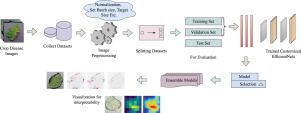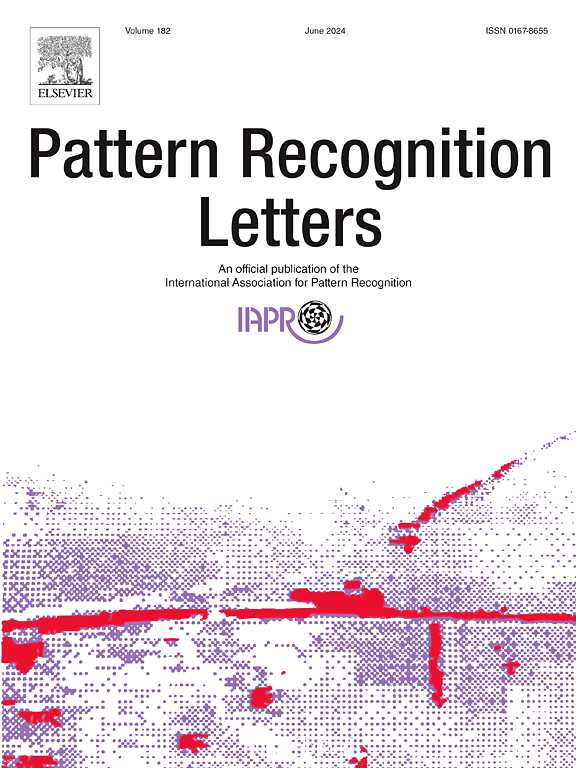A novel ensemble approach for crop disease detection by leveraging customized EfficientNets and interpretability
IF 3.3
3区 计算机科学
Q2 COMPUTER SCIENCE, ARTIFICIAL INTELLIGENCE
引用次数: 0
Abstract
Crop leaf diseases present a persistent and serious threat to agricultural productivity and food security, especially in agro-based countries. An effective resolution of this issue demands the development of automated methods for the timely detection and management of crop diseases. In this work, we present a novel ensemble technique for the automatic detection of crop diseases, utilizing four diverse datasets: corn, potato, wheat, and tomato, each containing images of both healthy and disease-affected crop leaves. While previous studies often employed basic transfer learning (TL) techniques, we aimed to improve TL performance by systematically integrating different versions of EfficientNet and customizing their architectures with additional layers. A key contribution of our research is a novel model selection method for ensemble learning, which goes beyond traditional accuracy metrics by addressing misclassifications and class-specific shortcomings. We developed a tailored approach using misclassification counts and Hamming Loss to redefine the model selection process, identifying the most suitable EfficientNet models for each dataset. We applied Gradient Class Activation Mapping (Grad-CAM) to visualize the model’s prediction process and integrated Shapley Additive Explanations (SHAP) to enhance interpretability by providing detailed insights into feature contributions. Thus, we introduced an efficient and transparent technique for automatic crop disease detection, achieving over 99% accuracy, precision, recall, and F-Score across all datasets, significantly outperforming existing methods.

利用定制化的高效网和可解释性,为作物病害检测提供了一种新颖的集成方法
作物叶片病害对农业生产力和粮食安全构成持续和严重的威胁,特别是在以农业为基础的国家。要有效地解决这一问题,就需要开发及时检测和管理作物病害的自动化方法。在这项工作中,我们提出了一种新的作物病害自动检测集成技术,利用四个不同的数据集:玉米、马铃薯、小麦和番茄,每个数据集都包含健康和患病作物叶片的图像。虽然以前的研究通常采用基本的迁移学习(TL)技术,但我们的目标是通过系统地集成不同版本的EfficientNet并使用附加层定制其架构来提高TL性能。我们研究的一个关键贡献是集成学习的一种新的模型选择方法,它通过解决错误分类和特定类别的缺点,超越了传统的准确性度量。我们开发了一种量身定制的方法,使用错误分类计数和汉明损失来重新定义模型选择过程,为每个数据集确定最合适的EfficientNet模型。我们应用梯度类激活映射(gradcam)来可视化模型的预测过程,并集成Shapley加性解释(SHAP),通过提供对特征贡献的详细见解来增强可解释性。因此,我们引入了一种高效透明的作物病害自动检测技术,在所有数据集上实现了99%以上的准确率、精密度、召回率和F-Score,显著优于现有方法。
本文章由计算机程序翻译,如有差异,请以英文原文为准。
求助全文
约1分钟内获得全文
求助全文
来源期刊

Pattern Recognition Letters
工程技术-计算机:人工智能
CiteScore
12.40
自引率
5.90%
发文量
287
审稿时长
9.1 months
期刊介绍:
Pattern Recognition Letters aims at rapid publication of concise articles of a broad interest in pattern recognition.
Subject areas include all the current fields of interest represented by the Technical Committees of the International Association of Pattern Recognition, and other developing themes involving learning and recognition.
 求助内容:
求助内容: 应助结果提醒方式:
应助结果提醒方式:


